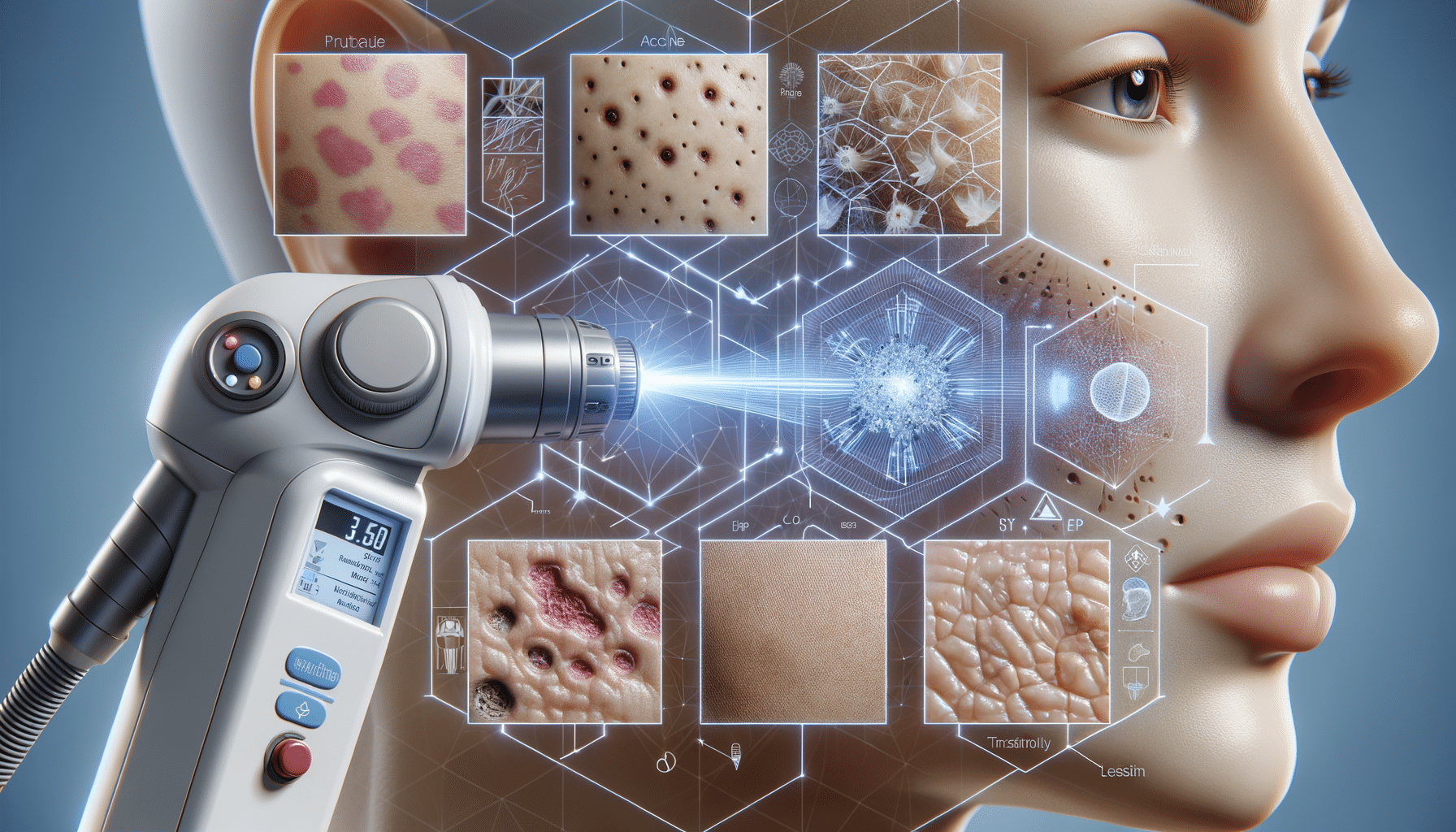How Fractional CO2 Lasers Can Help Manage Acne and Scars
Struggling with acne and its scars? Fractional CO2 lasers offer an advanced treatment that can help reduce the appearance of scars and improve skin texture. By resurfacing the skin and stimulating collagen production, it may help minimize scars and prevent future breakouts. While it can be effective, results vary, and continued care may be needed for optimal improvement.

Understanding Fractional CO2 Laser Treatment
Fractional CO2 laser treatment has emerged as a revolutionary approach in dermatology, particularly for those battling acne scars and skin imperfections. Unlike traditional laser treatments, fractional CO2 lasers work by delivering a series of tiny, focused beams of energy into the skin. This creates micro-injuries which stimulate the body’s natural healing process, promoting collagen production and skin regeneration.
The treatment is renowned for its precision, allowing dermatologists to target specific areas without affecting the surrounding skin. This precision minimizes downtime and reduces the risk of side effects, making it a preferred choice for many seeking skin rejuvenation. While the technology is advanced, the process is straightforward, typically involving a numbing cream application followed by the laser procedure itself.
Some benefits of fractional CO2 laser treatment include:
- Reduction in the appearance of acne scars
- Improvement in skin texture and tone
- Minimized fine lines and wrinkles
- Enhanced overall skin appearance
It’s essential to consult with a qualified dermatologist to determine if this treatment aligns with your skin goals and to understand the potential outcomes and risks.
The Science Behind Skin Resurfacing
At the core of fractional CO2 laser treatment is the concept of skin resurfacing. This process involves removing layers of skin to allow new, healthier skin to emerge. The laser’s energy is absorbed by water in the skin cells, vaporizing the targeted tissue and triggering a healing response. This response is crucial as it leads to the production of new collagen, a protein that provides structure and elasticity to the skin.
Collagen production is vital for reducing the appearance of scars and improving skin resilience. As the skin heals, the newly formed collagen helps to fill in scars and smooth out uneven skin textures. This scientific approach not only addresses existing imperfections but also enhances the skin’s ability to withstand future damage.
Research has shown that fractional CO2 lasers can significantly improve skin conditions with minimal adverse effects. However, results can vary based on individual skin types and the severity of the condition being treated. Patients often notice improvements in skin texture and tone within a few weeks, with continued benefits as collagen production increases over time.
Comparing Fractional CO2 Lasers with Alternative Treatments
When considering skin treatments, it’s essential to weigh the options. Fractional CO2 lasers are often compared to other treatments like chemical peels, microdermabrasion, and microneedling. Each has its unique benefits and drawbacks, making it crucial to understand how they differ.
Chemical peels involve applying a chemical solution to remove the top layers of skin, promoting new skin growth. While effective for surface-level issues, they may not penetrate as deeply as lasers, limiting their impact on deep scars.
Microdermabrasion uses a mechanical device to exfoliate the skin, removing dead skin cells. It’s less invasive but also less effective for deep scars compared to fractional CO2 lasers.
Microneedling involves using tiny needles to create controlled injuries in the skin, similar to fractional lasers. However, lasers offer more precision and can target deeper layers of the skin, providing more comprehensive results.
In summary, fractional CO2 lasers offer a blend of precision and depth that can be more effective for treating severe acne scars and skin imperfections. However, the choice of treatment should be based on individual needs, skin type, and desired outcomes.
Preparing for Your Fractional CO2 Laser Treatment
Preparation is key to maximizing the benefits of fractional CO2 laser treatment. Before undergoing the procedure, it’s crucial to consult with a dermatologist to discuss your medical history, skin type, and treatment goals. This consultation helps in tailoring the procedure to your specific needs.
In the weeks leading up to the treatment, patients are often advised to avoid sun exposure and use sunscreen diligently. This helps to prevent any potential complications and ensures the skin is in optimal condition for the procedure. Additionally, certain skincare products, particularly those containing retinoids or glycolic acids, may need to be paused to reduce skin sensitivity.
On the day of the treatment, the skin is typically cleansed, and a topical numbing cream is applied to minimize discomfort. The procedure itself is relatively quick, usually lasting between 30 minutes to an hour, depending on the treatment area. Post-treatment, patients may experience redness and swelling, similar to a sunburn, which usually subsides within a few days.
Proper aftercare is essential to ensure a smooth recovery and enhance results. This includes using gentle skincare products, staying hydrated, and avoiding sun exposure. Your dermatologist will provide a detailed aftercare plan tailored to your skin’s needs.
Conclusion: Embracing Healthier Skin with Fractional CO2 Lasers
For those seeking to improve the appearance of acne scars and enhance skin texture, fractional CO2 lasers offer a promising solution. By leveraging advanced laser technology, this treatment promotes skin renewal and collagen production, leading to visible improvements in skin quality.
While the journey to healthier skin requires commitment and care, the results can be transformative. Whether you’re looking to reduce scars, smooth out wrinkles, or achieve a more even skin tone, fractional CO2 lasers provide a versatile and effective option.
As with any medical procedure, it’s essential to consult with a qualified dermatologist to ensure the treatment aligns with your skin goals and health needs. With the right approach and care, you can embrace a rejuvenated, confident version of yourself.